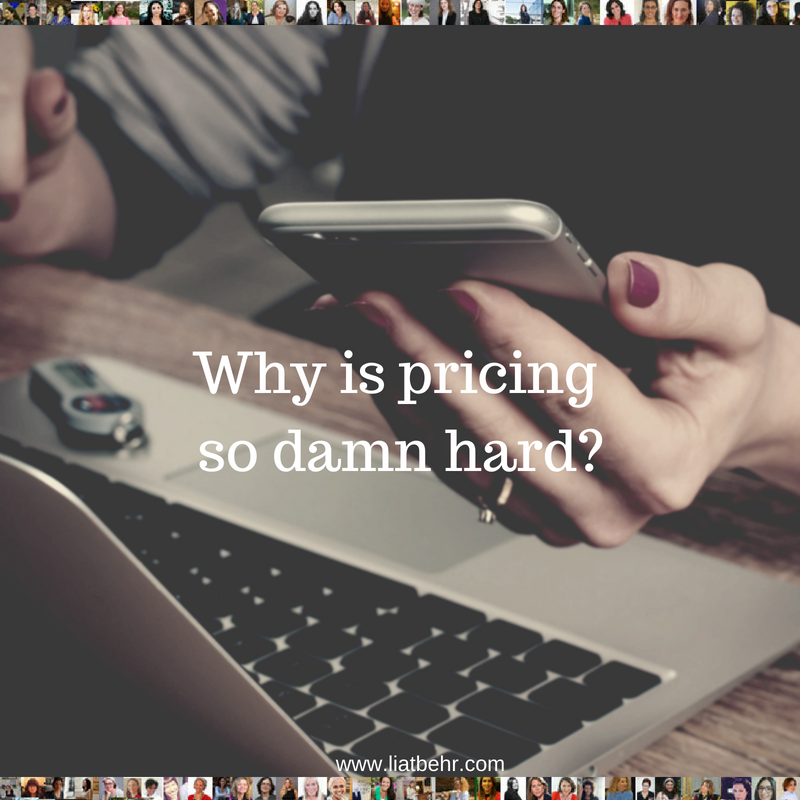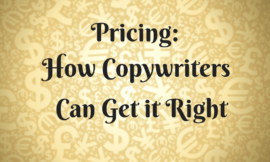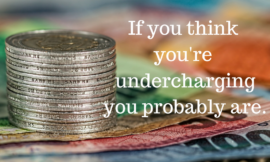Whether you own a big or small business, pricing is hard.
It’s especially hard when you’re just starting out, and it continues to challenge as you build and add on pieces to your business. Pricing is like a young toddler, constantly nagging you and demanding your attention. And rightfully so. Because how you price your products and services will in fact determine how much revenue and profit you will drive.
But what in fact is it that makes pricing so difficult to figure out? And how can understanding the elements of pricing help us come just a bit closer to pricing our products and services better?
Want to know? Keep reading.
1. We always want more
We’re in business to make money. We want our products and services to be highly regarded and we want customers to bang on our door and beg us to take their money. So really, it’s only natural that we want to command the highest price we possibly can. But what is that price – that magic number?
If we price too high, we’ll lose out on the business, and if we price too low, we’ll leave money on the table and perhaps damage our reputation in the market.
Everything is relative. And certainly pricing a product is easier than pricing a service.
Experience taught me to start at the beginning. Really, I had no choice. You know why? Because when I started out, I had no experience as a copywriter, no track record, no recommendations, nothing. And yet, like an idiot, I wanted to start at the end. I wanted to charge hundreds of shekels (and thousands!) for my services. Except that nobody wanted to pay me, because I wasn’t justified in my ask.
So I started low. In fact, in my first year of life as a copywriter, my total annual revenue was less than 6,000NIS (approximately $1,500 US).
After my price quotes were rejected, I went to the other extreme and decided that I don’t care about revenue. I cared only about gaining experience and understanding my clients’ needs and the services I offer in light of those needs. In that first year, I came to the conclusion that I care about feedback more than I care about price.
2. Pricing strategy matters
Last year, I read Pricing with Confidence: 10 Ways to Stop Leaving Money on the Table by Mark Burton and Reed K. Holden.
The book outlines four typical pricing strategies that businesses employ and how each pricing strategy helps them – or sets them back:
i. Cover costs – businesses that are pricing their products and services to cover their costs
There are two issues with this:
a. Nobody cares about your business costs
b. You’re letting others determine your value
ii. Meet the market – lowering price to meet market price
The problem: we sell to customers not the market. When customers request a discount, we’re quick to reduce price because we think we’re meeting the market, except that we’ve totally ignored the value we’re bringing to the customer
iii. Close the deal – lowering price to close a deal
Here too, the problem is completely ignoring value. But even worse – if customers get a whiff of the fact that this is our strategy, we’re toast. Because each time we come to close a deal, they’ll put pressure on us to lower prices and won’t close the deal with us until we do.
iv. Gain market share – lowering price to gain market share
This is when the prospective customers asks suppliers to bid for a project. It’s another way of saying a pricing war. And pricing wars are bad for suppliers. Because everybody loses (except of course, the customer).
I used to price to meet the market. It wasn’t a conscious decision. In fact, I never really thought about it. Only analyzing it later did I realize that any time a customer asked for a discount, I was only too happy to oblige because I thought I was meeting the going price.
I later learned, that for services, there is no going price. There’s always someone cheaper than you, there’s usually someone more expensive than you. Question is, where do you position yourself and what can you do to help your clients understand your value.
3. We view pricing as one way communication instead of as a conversation
As I already mentioned, when I started out, I got price quotes totally wrong. The companies I came in contact with mostly thought that I was trying to rip them off. I wasn’t. I thought I was worth every penny. Except that I couldn’t prove it. But my lack of proof created a negative thought in the buyer’s mind.
So I racked my brains. And still came up with nothing. But accidentally, in a conversation with a prospective client I started negotiating; I started providing other options, taking into account both the customer’s need as well as my own.
This did two things:
i. It showed prospective clients that I’m listening to their needs and care about them. This is vitally important because it builds trust.
ii. I shifted the conversation from price to value. I enabled clients to pay for what they need as opposed to paying for services they don’t need. By providing options, clients could now pay less and receive less or pay more and receive more.
4. We mistake every customer for our ideal customer
Not every customer who walks through the door (or arrives at your website, or calls you, or whatever), is your ideal customer. Nor can you turn every prospect into an ideal customer.
According to Negotiating with Backbone by Reed K. Holden, there are four types of buyers:
i. Price buyers
They’re looking for the lowest price. Don’t try to entice them with value.
ii. Relationship buyers
They want to depend on you. Take care of them and they’ll take care of you.
iii. Value buyers
A sophisticated buyer who is looking for value.
iv. Poker players
Relationship buyers or value buyers pretending to be price buyers.
You need to be able to identify these different types of buyers. You also need to know which of these buyers are your ideal client. You can certainly try to work with all of them but you also need to know when to walk away or when to call their bluff.
I once provided a price quote to a company after a long conversation about their needs. They got back to me that the price quote was too high and that I would need to lower it if I am to do business with them. I did. Except that I didn’t automatically discount the original price. I carefully identified the value-rich (and costly) aspects of the price quote and removed them. I lowered the price, but I also lowered the value.
It’s this type of behaviour that helps identify whether you’re dealing with a price buyer or a poker player.

5. Value matters more than price
In The Secret of Selling Anything, Harry Browne writes: “The extent of your own profit depends upon your ability to satisfy the needs and desires of others.”
How much money you make absolutely depends on the extent to which you meet the values, standards and desires of your clients. And while it sounds simple, it can be difficult to determine.
Often when we talk about price, we talk about our needs and desires – think about the pricing strategies above.
Value means looking at your business through a different lens; that of your client’s. And it may be uncomfortable. Because your clients’ desires may not exactly fit what you want to offer or how you want to offer it. But if you allow yourself to listen, and allow yourself to be responsive, you can make a killing.
A couple of years ago, my husband and I entered a new shop. It was a boutique food shop and they had wonderful products. We would come in at least once a week, because we liked the shop owner, let’s call him Sam. We really wanted to see Sam succeed, so we did our best to buy a few items at least once a week, though the items were expensive. For a while, every time we walked in it was pretty empty.
At one point, we weren’t in the shop for a couple of weeks, and when we arrived again, it was completely transformed offering new types of products, most of them French.
Sam explained that many French people had walked in and asked for certain products which he didn’t carry. He began carrying them. In fact he did research into exactly the type of products French people love. He began importing them and totally catered to their palate. Every time we now walk into that shop, it’s packed. We have to wait in line. It’s incredibly inspiring to see someone succeed like that.
At one point Sam revealed to us that the products he sells the most of, are in fact the most expensive. The French too have their comfort foods. Sam meets their values, standards and desires head on. Price, in this case, is meaningless.




Your article resonates with me as this is my biggest struggle. In addition, you graciously shared a few books to follow up with on the topic. Thank you very much.
Yael, my pleasure! If there are pricing issues you’d like me to address in future posts, please let me know – you can get in touch with me directly or on social media.
What is your definition of success?
also further comment to your post on pricing (comments were closed) – in a product based environment, there should be a formula to stick by based on COGS (cost of goods sold) X your markup formula. This markup should offset your costs of production as well as costs of running your business ie. auto expenses, office expenses, postage/courier, professional fees, conferences, etc. We manufacture modest swimwear, sportswear & casualwear in Israel. I consider myself successful but still small.
Hi Marci, thanks for taking the time to comment.
I believe that to be truly successful we need to be able to see even our smallest wins as success.
It’s the small successes that propel us forward.
So in other words, if we are able perceive ourselves as successful – we are.
About pricing. In my article, I focused mainly on services.
I believe that pricing is something that evolves, and of course the pricing formula must take into account all your overhead costs.
Here’s a link to an article about retail pricing strategies that you might find helpful. http://bit.ly/2JAnWd2